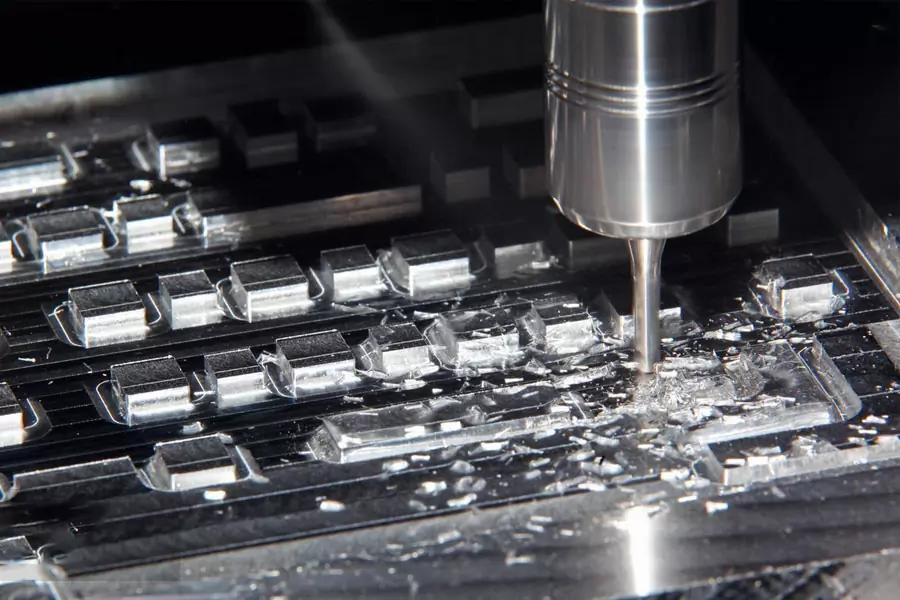Usually, alloy steel with a mass fraction of chromium greater than 12% (mass fraction) or a mass fraction of nickel greater than 8% is called stainless steel. Stainless steels are classified according to their metallographic structures, including martensitic stainless steel, ferritic stainless steel, austenitic stainless steel, austenitic + ferritic stainless steel and precipitation hardening stainless steel.
After the stainless steel is cut, the cutting surface and the machined surface are severely hardened, which can reach 1.4 to 2.2 times the hardness of the substrate, and the depth of the hardened layer is 0.1 mm, which brings difficulties to subsequent cutting; due to the high plasticity, toughness and tensile strength of stainless steel , the unit cutting force is 1.25 times that of cutting 45 steel; the thermal conductivity of stainless steel is 1/4~1/2 of that of 45 steel [50.2W/(m K)], so under the same cutting conditions, The cutting temperature is about 200 °C higher than that of cutting 45 steel; due to the plasticity, toughness, high cutting temperature and affinity of stainless steel with other metal elements, the tool-chip bonding and diffusion occur, and the tool is bonded and diffused. wear.
Also due to the serious hardening phenomenon when cnc machining stainless steel, it will increase the wear of the tool.

- The tool material for turning stainless steel is required to have high heat resistance and wear resistance according to the above-mentioned cutting characteristics of stainless steel, and has a small affinity with stainless steel.
- High speed steel. Ordinary high-speed steel (W18Cr4V) tools have low durability. W6Mo5Cr4V2Al and W12Cr4V4Mo high-performance high-speed steel should be used, which can double the durability of the tool.
- Carbide. YG-type TaC or NbC fine-grained or ultra-fine-grained cemented carbides should be used, such as YG6X, YW4, YS2, YS8, YD15, 813, etc. If a coated blade is used, it is best to use TiAlSi coating, which can prevent adhesion and wear during the cutting process, and at the same time increase the surface hardness of the blade to 3600~4200HV.
- Tool geometry parameters The rake angle of the stainless steel machining tool is γo=20°~30°, the clearance angle αo=8°~10°, the main declination angle κr=45°~75°, the secondary declination angle κr=8°~15 °, the edge inclination angle λS=-3°~0°, the radius of the tool nose arc rε=0.5~1mm. The form of broken (rolled) chip groove is full circular arc or straight circular arc, with groove width Bn=3~5mm, groove depth h=0.5~1.3mm, and broken (rolled) chip groove radius Rn=2~8mm.
- Cutting amount Due to the cutting characteristics of stainless steel, the cutting speed is 40%~60% of that of cutting 45 steel, and the cutting depth ap and feed f should be greater than 0.1mm.
- When the cutting fluid is rough turning, use emulsion or extreme pressure emulsion; when fine turning, use vulcanized oil (that is, mineral oil containing 2% sulfur).
- Attention should be paid to turning stainless steel, especially austenitic stainless steel, should use a lower cutting speed (high-speed steel tool vc=18~20m/min; cemented carbide vc=40~60m/min) and a higher cutting speed than the hardened layer The depth of ap and f; when drilling with high-speed steel drills, the cutting edge of the drill should not stay on the cutting surface, so as not to aggravate the hardening of the cutting surface and bring difficulties to the next feeding; when reaming stainless steel holes, vulcanized oil should be used. Isobaric cutting fluid.